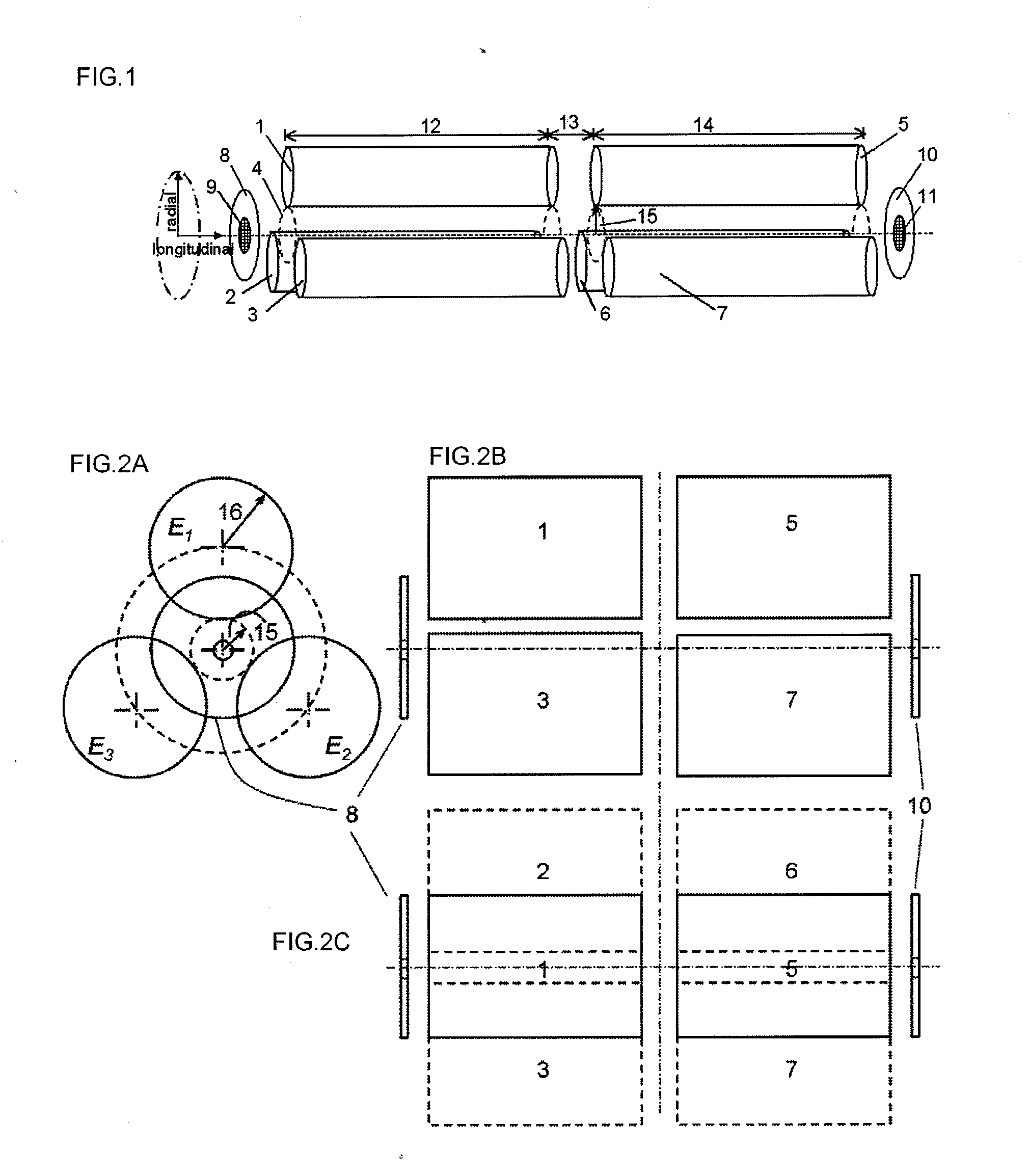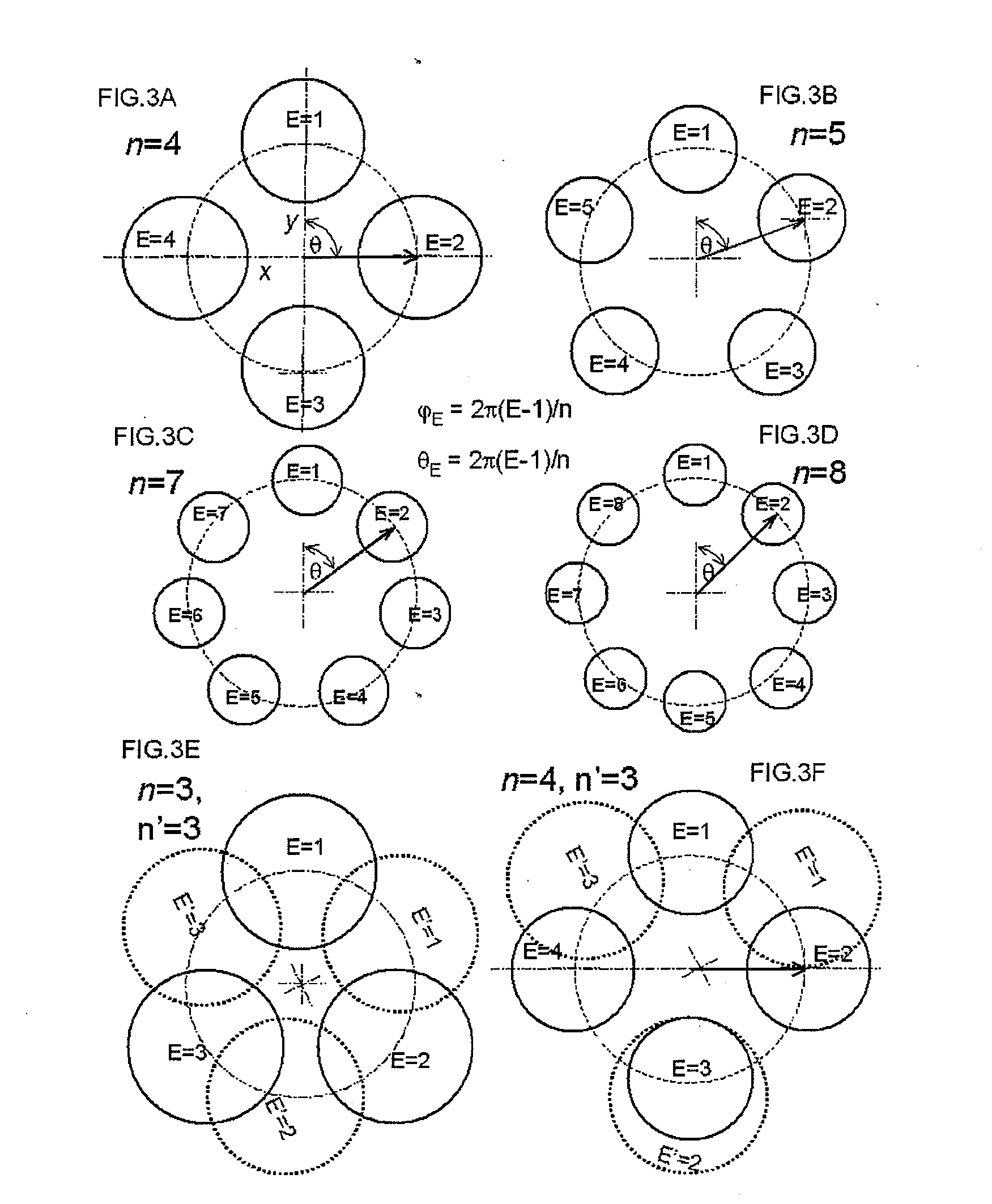Phase shift RF ion trap device
a technology of ion trap and phase shift, which is applied in the direction of separation process, mass spectometer, dispersed particle separation, etc., can solve the problems of space-charge repulsion interference, trap can be filled, and some ions are expulsed
- Summary
- Abstract
- Description
- Claims
- Application Information
AI Technical Summary
Benefits of technology
Problems solved by technology
Method used
Image
Examples
Embodiment Construction
[0086]An embodiment of the present invention is an ion trap comprising at least two ion guides separated by one or more gaps and each ion guide comprises three or more (“n”) rod electrodes that are numbered “E” consecutively clockwise or counterclockwise from 1 to “n”.
[0087]The electrode is preferably in a rod shape. Each of the ion guides may have an equal or unequal number of electrodes. The rod electrodes are positioned in radial locations around a field space. The electrodes can be asymmetrically or symmetrically positioned at angular position (θ), where θE=2π(E−1) / n radian is determined with a central axis as the origin. In the case of asymmetric angular positioning, the rods width and shape preferably be changed in order to fulfil two conditions, the electrodes with different phase cannot touch each other and the electrodes may surround the field space. In the case of three-rod electrodes in a symmetrical position, the rods are positioned at angular positions of 0, 120 and 240...
PUM
 Login to View More
Login to View More Abstract
Description
Claims
Application Information
 Login to View More
Login to View More - R&D
- Intellectual Property
- Life Sciences
- Materials
- Tech Scout
- Unparalleled Data Quality
- Higher Quality Content
- 60% Fewer Hallucinations
Browse by: Latest US Patents, China's latest patents, Technical Efficacy Thesaurus, Application Domain, Technology Topic, Popular Technical Reports.
© 2025 PatSnap. All rights reserved.Legal|Privacy policy|Modern Slavery Act Transparency Statement|Sitemap|About US| Contact US: help@patsnap.com



